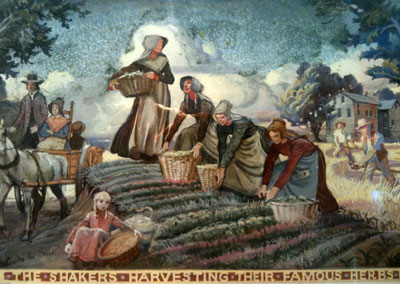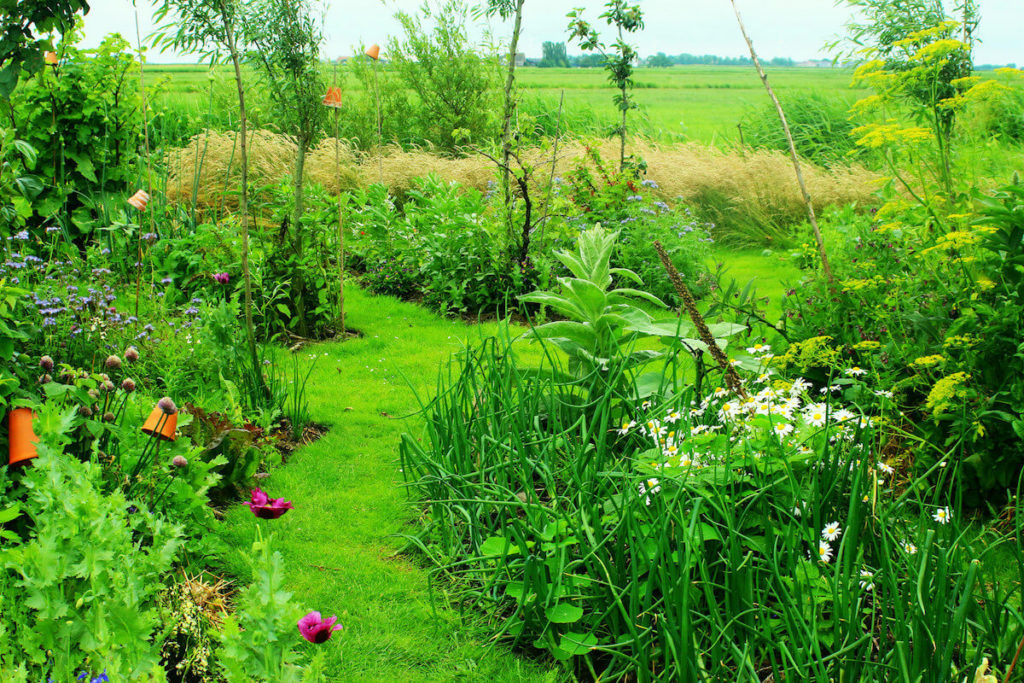As I started writing Gaian Reflections in July of 2019 and sending them off into the infosphere, my hope was to find other people who self-identified as Gaians and build a community, as well as a set of shared practices that would reinforce our connection to the Earth, support a sustainable way of living, and make this community more resilient now and in the challenging times ahead (which turned out to be nearer than anticipated). I didn’t know what to expect, and I certainly didn’t think I’d find such passionate and committed Gaians to share this journey with me, spread across the biosphere—individuals who have become friends, confidantes, and who have helped me become a better Gaian.
While this virtual community has been a truly wonderful gift, from the beginning the hope has been to establish local Gaian groups and encourage others to do the same. That’s for many reasons: to spread an ecocentric way of living to those who might be called to live this way but not know how to; to help the community one is physically rooted in (with ecocentric education, activism, and service); and because while a virtual group is great in connecting with like-minded people and nurturing one’s ‘Gaian-ness,’ when things fall apart—and let’s be clear, this is not always a slow and gentle process1—having a community you can trust (who is physically near and accessible without technology), and who understands the ecological way, will be valuable, and may even mean the difference between life and death.
I’ve said all that before (such as here), but what I have never discussed is what these groups are called. Honestly, that’s both because I struggled with the right word for a long while (Communities? Fellowships? Pods?2), and because I wasn’t sure the semantic breakdown of this term would make for a great reflection. But, no matter, the time has come to just get it out there. Why? Because we now have three local groups, who have already adopted the name.
Ok, if you haven’t guessed yet, that name is “Guild.” As in the Crescent City Gaian Guild in New Orleans, the Middletown Gaian Guild, and our newest local group, the Gaian Guild of Hawai’i Nei in Honolulu (Aloha!).
So What’s a Guild?
While a bit elementary, it never hurts to start with a dictionary definition. Oxford Dictionary defines a guild as:
1 A medieval association of craftsmen or merchants, often having considerable power.
1.1 An association of people for mutual aid or the pursuit of a common goal.
1.2 (Ecology) A group of species that have similar requirements and play a similar role within a community.
Let’s start with 1.1. This, ultimately, is the hope. People supporting each other, providing mutual aid and pursuing the shared goal of a culture that is Earth-centric, where humans are in a restorative relationship with Gaia.

The Shakers became renowned for their craftsmanship, medicinal herbs, even their inventions (a Shaker invented the circular saw). Can Gaians one day do the same? (CC via Wikipedia)
Perhaps, too, over time, as the era of the consumer economy wanes, Gaians will develop trades they’re skilled in and sought after (definition 1)—ones that apply ecological wisdom and knowledge to improve our and Earth’s wellbeing (just as the Shakers were known for their exquisite furniture and herbal medicine). One obvious Gaian trade is: Permaculture. As Thomas Ellis has argued, permaculture is a natural ‘praxis’ of a Gaian philosophy. As many more humans turn to sufficiency farming as economic degrowth (or unplanned economic contraction) leads us there, having (and sharing those) skills in Earth-restorative agriculture could be a trade for many Gaians.
My favorite trade to daydream about is midwifery. This field is ripe for growth in the United States. Nearly a third of American women get Cesarean-sections each year, leading to less than optimal outcomes for mothers (trauma), babies (no proper gut biome cultivation), and the planet (as surgical births utilize significantly more resources than natural ones).3 And why? Medical system culture, convenience, litigiousness, and lack of options and education (of both the risks and the alternatives) of pregnant women. But imagine kind Gaian midwives and doulas correcting that. Just as Mother Theresa drew Indians into Catholicism by safely delivering babies in the slums of Kolkata, so too could Gaians provide this key, life-saving (and life-transforming) service.4
The main definition of relevance is actually the ecological term: a group of species, playing a similar role in an ecological community (an ecological community means species that interact in the same place).5 Gaians are (or could be) individuals serving their broader community in those roles I describe above—increasing sustainability, Earth-centeredness, and preparing people for the changes coming. What’s interesting is that this term ‘guild’ has been used by other Gaian thinkers. Tyler Volk, in his book Gaia’s Body: Toward a Physiology of Earth, describes “biochemical guilds,” which are “groupings of bacteria, protists, fungi, plants, and animals that create similar chemical transformations in the biosphere.” These, Volk argues, are what led to the creation of Gaia as a living holobiont (p. x).
More famously, Toby Hemenway uses the term in his writings on permaculture. As he explains in Gaia’s Garden, guilds are “synthetic” plant communities, combining “natives, food plants, medicinal and culinary herbs, insect- and bird-attracting species, plants that build the soil, and others into synergistic, mutually beneficial groupings” to “form healthy, interacting networks that reduce the gardener’s labor, yield abundant gifts for people and wildlife, and help the environment by restoring nature’s cycles” (p. 12.)

An idyllic permaculture garden (Anastasia Limareva via CC by 2.0)
This is the pathway forward: cultivating nature in ways that heal both the landscape and provide for people.6 Gaian Guilds can mimic those holistic interactions to cultivate a restorative community: working to heal social ills in ways that also heal the Earth, whether that’s engaging in environmental activism, or reconnecting children (and adults) to nature, healing the land through permaculture and gardening, or even currently unrecognized ways like helping to better establish and develop the practice of midwifery. It’s the combination of all of these: the native plants, food crops, soil builders, medicinals, and pollinator-attractors that together create a healthy guild and a healthy garden community.
Moreover, As Hemenway notes, the “guild restores nature’s role as the gardener’s partner” (p. 154). By orchestrating the right plants and their right placements, a “right relationship” emerges. Gaians could help bring nature and humanity back into a true partnership—a right relationship—which improves the well-being of both.
Of course, right now, our guilds are small—or more correctly are a handful of itinerant seeds that have taken root in a few gardens around America. These seeds hopefully will grow strong and bear fruit, drawing birds that bring other seeds with them and help add to the diversity—and robustness—of the gardens they’ve landed in. Time will tell, of course, but at the least, we now have a name!
Endnotes
1. The destabilization of the US over the past four years hints at this, as do so many historical case studies, such as the Soviet Union.
2. Fellowship was a good one, especially with its Lord of the Rings connotation (with Gaians trying to stop the industrial devastation of Gaia against remarkable odds). And pods was a top contender for a while, with its use for cooperative dolphin groups, and as a seed pod that spread seeds. But fellowship has a male connotation and is often used by Christian groups, and pods connote pod people and those moving containers. So both fell short and were tossed into Mount Doom.
3. And, this wasn’t even on my radar but Cesarean sections are affecting human evolution as well. As more children are born via C-sections, future generations may not even be able to be born without C-sections (being too big to fit through the birth canal). That’s not to say we should let these babies die, but it’s not hard to imagine a scenario in the collapsed future where infant survival depends on whether you’re rich (and can afford a C-section) or poor (and cannot). Do we really want inequality to reach that extreme level? (And yes, we have already reached it in so many ways when regarding access to basic life-saving medicine—but as this shows, there’s room to go even further.) One final note: midwives can help keep baby-size smaller by maternal education: limiting white flour and sugar (aka a healthy, or even a Gaian diet) can help keep developing babies smaller (in a good way)—and vaginally deliverable.
4. One day, I hope we’ll create a Gaian Scholarship Fund for Earth-minded Doulas (midwife helpers). That could be a good means to help cultivate this trade. As well, moments of liminality, such as marriage, birth, and death, open people to a lot of changes. Thus engaging with these rituals is an excellent educational intervention point.
5. The definition of an ecological community is “a group of actually or potentially interacting species living in the same place. A community is bound together by the network of influences that species have on one another.”
6. And, as Hemenway notes, the traditional way of Indigenous plant and landscape tending.
Teaser Photo by Edward Howell on Unsplash





